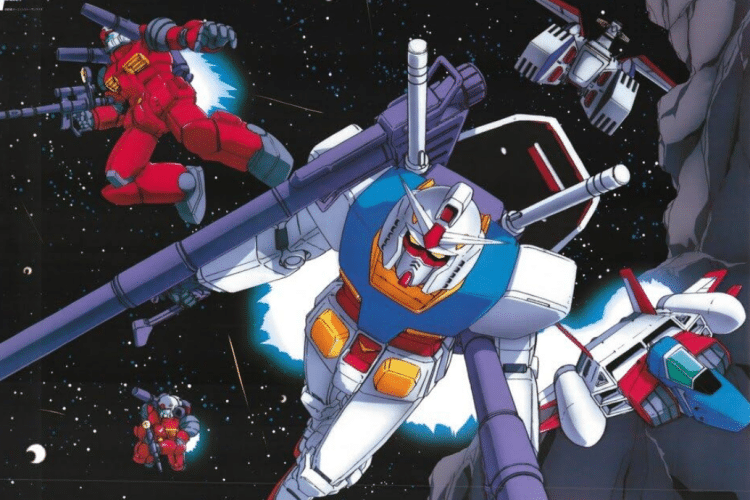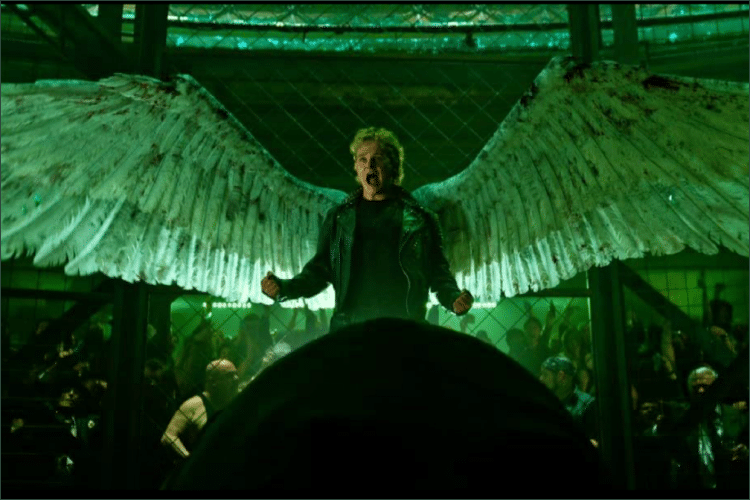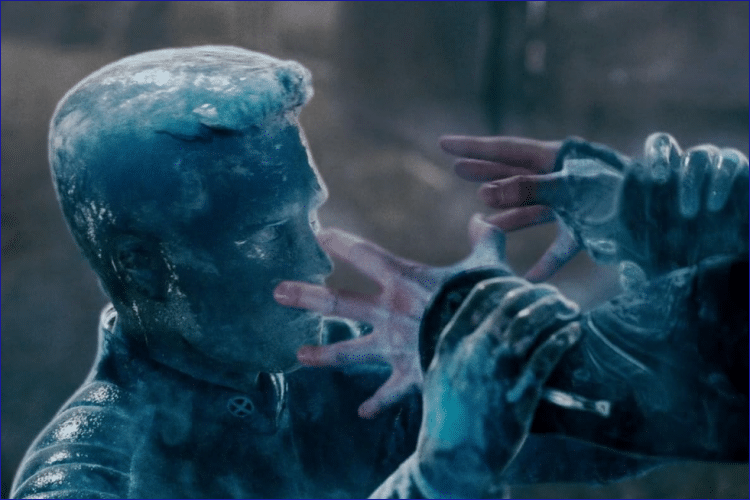Suit Up with these Six
Mariemaia: History is much like an endless waltz. The three beats of War, Peace, and Revolution continue on forever.”
Mobile Suit Gundam Wing: Endless Waltz
Mobile Suit Gundam is the Japanese anime equivalent of Star Wars. Taking place off-Earth, Gundam features teenagers piloting giant robots to fight in interstellar wars. The giant robot fights draw fans into stories about philosophy, the horrors of war, and bonds between people on both sides of war.
Gundam can be cleanly divided into two sections: The Universal Century and alternate timelines. The Universal Century takes place in the world of the original Mobile Suit Gundam, building on past stories to show cyclical wars between Earth and outer space. Alternate timeline stories do whatever they want, but often feature analogues to UC stories.
So what are the top 5 Gundam series? Where’s the best starting point? Let’s find out.
Scene Select
Glossary
Mobile Suit: A giant robot used for combat in space. Gundams are outliers specialized for specific styles of combat. They are given much better equipment than mass produced units. All gundams are mobile suits, but not all mobile suits are gundams.
Spacenoids: Humans who don’t live on Earth. They oppress Earthnoids or are oppressed by them, depending on who is telling the story. Spacenoids are also called Spacians in some series.
Colony: A city-sized space station inhabited by Spacenoids. While partially independent, they are often ruled by a political organization such as the Earth Sphere Unified Nations or the Principality of Zeon.
Newtype: Humans who have developed psychic and empathic powers by adapting to outer space. They can see the future, control electronics, and communicate with souls. Newtypes are often conscripted because they can turn a mobile suit into a giant robot Jedi. Only people raised in space can naturally become Newtypes, often claiming that Earthnoids “have their souls weighed down by gravity’s pull.”
Honorable Mention: Mobile Suit Gundam
Opening Narration: “It is the year 0079 of the Universal Century. A half-century has passed since Earth began moving its burgeoning population into gigantic orbiting space colonies. A new home for mankind, where people are born and raised… and die.“
Mobile Suit Gundam “Gundam Rising” (Season 1, episode 1)
You’ve got to start somewhere. Every Gundam sequel and adjacent mecha anime owes an unpayable debt to this trailblazing series.
Synopsis: The Principality of Zeon launches a war against Earth for interstellar independence. Weapons of mass destruction are unleashed to soften Earth’s forces before Zeon’s newly developed superweapons, the mobile suits, invade.
Three bleeding-edge mobile suits are created on a Federation-controlled colony, chief among them the Gundam. Moody teenager Amuro Ray becomes its pilot after the first choice is murdered by Zeon forces. The colony is destroyed, leading Amuro and several other conscripted Newtypes to seize the battleship White Base to evacuate. The White Base crew must escort the colony’s civilian population through Zeon territory to reach safety.
Why This Series?: Mobile Suit Gundam developed the structure that later series perfected. It followed the teenaged crew as they grew up and experienced war. The Principality of Zeon are Space Nazis, but individuals were portrayed sympathetically. They had their own morality and dreams, often reacting in horror as Amuro cut down their friends.
Gundam started as a monster of the week series, but evolved into a space opera. Episodes focused on interpersonal bonds and intrigue for both sides. Schemes got even more chaotic when wildcard villain protagonist Char Aznable stepped onto the battlefield.
Mobile Suit Gundam didn’t make the list because it is dated. Much like Star Trek or the Twilight Zone, it seems generic after being frequently copied. The animation is also sluggish and Amuro often acts like an anime Holden Caulfield. Despite the flaws, Mobile Suit Gundam walked so its successors could fly.
Fun Fact: A trilogy of compilation movies were released in the 1980s with updated animation and tighter pacing. It is probably the best way to watch Mobile Suit Gundam; just beware of their love for flashing lights.
#5 Mobile Fighter G Gundam
Domon: This hand of mine glows with an awesome power! It’s burning grip tells me to defeat you! Take this: My love, my anger, and ALL OF MY SORROW! SHINING FINGER!”
G Gundam “Terror! The Phantom Fighter Appears” (Season 1, Episode 10)
Gundam’s first foray into alternate timelines was a palette cleanser. Something completely different was needed to lighten the bleak tone that previous series had set. How do you break from the trauma of war? With hot-blooded, globetrotting, martial arts insanity, that’s how!
Synopsis: The rich and powerful have left Earth after pollution ravaged the planet. They hold an annual Gundam Fight tournament, a proxy war on Earth between gundams to determine which colony will rule the universe for the next four years.
Neo-Japan’s combatant is Domon Kasshu, an irritable martial artist seeking revenge against his missing brother, Kyoji, for stealing the Dark Gundam. Domon is joined by an even-tempered mechanic named Rain and finds allies in fighters from America, France, China, and Russia as he wanders Earth. The Dark Gundam’s forces begin wreaking havoc as the Gundam Fight continues.
Why This Series: G Gundam takes Crouching Tiger, Hidden Dragon, blends it with the WWE, then plays the result completely straight. It’s gloriously moronic. G Gundam isn’t the most impactful Gundam series with commentary to spare, but certainly one of the most fun to watch.
What other series has German ninja mentors, a cyborg mummy hunting a shaolin monk, or the main characters channeling the power of love through a tango to blast Robo-Satan with the King of Hearts?
G Gundam’s over-the-top nature is a double-edged sword. Moments that some fans cheer will make others cringe. It features many national stereotypes in robot design, like the mustachioed, sombrero-wearing Tequila Gundam from Mexico. The second half also has Domon pulling new powers out of his ass every other episode.
Fun Fact: Many of the gundams’ names were changed when the series was dubbed into English. Most notably, The Dark Gundam was the Devil Gundam and Domon’s Burning Gundam was the God Gundam. That’s where the G in “G Gundam” comes from.
#4 Mobile Suit Gundam Wing
Relena: “Are you off to fight again? Where’s your next mission, Heero? [he pulls a gun on her] If you kill me now, it would cause quite the commotion, and I don’t think you want that. The school’s holding a party right now. Might as well enjoy it, at least until the dance is over.”
Gundam Wing “Party Night” (Season 1, Episode 6)
Many Gundam fans first discovered the franchise during the 90s anime boom. This series aired on Toonami alongside classics like Dragon Ball Z and Sailor Moon. This Gundam series will always hold a place in the hearts of those fans, including me.
Synopsis: The United Earth Sphere Alliance rules space with an army of mobile suits. A coalition of terrorists from several colonies create five gundams and send them to destroy the Alliance. Several factions spring up in the ensuing conflict as the pilots fight for their own purposes.
Wing Gundam, the strongest of the five, is shot down by Alliance forces. Its pilot Heero Yuy is rescued by Relena Darlian, a diplomat’s daughter. Heero repairs Wing Gundam and begins stalking Relena so that she can’t ID him. Caught between Alliance forces on his tail and Relena’s unflinching guile, can Heero complete his mission?
Why This Series?: Gundam Wing doesn’t operate on black and white morality. Who’s right and who’s wrong changes drastically between episodes. Are the pilot’s actions justified despite killing thousands? Is the entire Alliance corrupt or is it only a few leaders? Adding personal goals and vendettas for each pilot helps keep them grounded to a moral code.
The other gundam pilots give fans a break from Heero and Relena’s “will they, won’t they” drama. Viewers can watch Duo’s happy-go-lucky massacres alongside Wufei’s arrogant devotion to being a warrior. Perhaps the burgeoning friendship between stoic artillerist Trowa and martial pacifist Quatre is more appealing to viewers.
Variety is Gundam Wing’s Achilles heel. The shifting plots, factions, and characters leaves the series lacking a core storyline. There is also a lot of chaff to cut from the wheat. The story could be told in half of the time the series was given to tighten the pacing.
#3 Mobile Suit Gundam: Iron Blooded Orphans
Mikazuki: “I don’t care who you are, it doesn’t change that you are my enemy.”
Mobile Suit Gundam: Iron Blooded Orphans “The Final Lie” (Season 1, Episode 23)
Gundam often reflects historical wars. The original was WWII in space. This series examines elements from more recent conflicts in Asia and Africa.
Synopsis: A Martian private military contractor has bought an army of Human Debris, enslaved child soldiers enhanced with illegal technology. When they are attacked by Earth-based peacekeeping force Gjallarhorn, the adults leave the children to die while they retreat.
A young boy named Mikazuki discovers the Gundam Barbatos hidden beneath their base and uses it to defeat Gjallarhorn’s forces. The children form their own mercenary group called Tekkadan to fight for their freedom. Their first mission: escort young noblewoman Kudelia to broker a deal for Martian independence from Earth.
Why This Series?: Iron Blooded Orphans is like Game of Thrones in space. Instead of lasers on every robot and psionic Newtypes running about, IBO has a grittier, low-tech setting. Building-sized melee weapons including maces and axes make each slain mook’s death that much more gruesome.
Kudelia serves as a witness to Tekkadan’s rise as a mercenary company. Her pacifist views are often debated by their jaded leader Orga and ruthless stoic, Mikazuki. The atrocities they commit horrify Kudelia, who spends a lot of time getting Mikazuki to open up to her.
Iron Blooded Orphan’s darkness holds it back. While a great series, it often delves into more gruesome topics than fans may enjoy. It would be faster to list articles of the Geneva Convention that the characters don’t violate, to say nothing of examining the mentality of traumatized child soldiers. Those qualms only get more intense as the series racks up a body count that would make George R. R. Martin blush.
#2 Mobile Suit Gundam Unicorn
Bright: “Just like every other Gundam pilot, I like to think that it chose you. It was always the inevitable outcome. Be it good or bad.”
Mobile Suit Gundam Unicorn “Black Unicorn” (Season 1, Episode 5)
Banagher: “Captain Bright…”
Bright: “The rest is up to you. Don’t let the situation crush you. Be brave enough to fight off despair. If you’re a Gundam pilot… a Newtype… you can do it.”
Continuity is The Universal Century’s greatest strength. Many wars have been fought since Amuro clambered into the Gundam, each creating its own debt. In this series, those debts come due.
Synopsis: A woman named Audrey Burne holds the key to Laplace’s Box, an artifact that could change the universe. Soldiers try to kidnap her, but Audrey is saved by teenager Banagher Links. Resurgent Zeon forces attack, but Banagher discovers the Unicorn Gundam and repels Neo Zeon’s mobile suits.
Banagher promises to protect Audrey and help her find Laplace’s Box. They examine both faction’s ideologies while fighting against Full Frontal, Neo Zeon’s leader and allegedly Char Aznable reborn. As the Unicorn rides through battlefields, one question is on everyone’s lips: what is hidden inside Laplace’s Box?
Why This Series?: Unicorn builds on almost every UC series before it, featuring cameos from mobile suits and characters mirroring previous generations. Several supporting characters from previous series also step into the spotlight.
The Federation and Zeon get deep dives into their motivations and goals, with each having hideous flaws among their plans for humanity’s future. The mobile suit designs are sleek and imposing while Unicorn’s soundtrack is arguably the best in the franchise.
Unicorn missed our top spot because it demands that fans do their homework. You’ll miss a lot if you don’t know what a Cyber-Newtype is, the motivation behind Char’s controversial military campaign, or why the Zabi family matters. That’s before characters who haven’t been on screen in over twenty years return.
#1 Mobile Suit Gundam: The Witch From Mercury
Sulleta: “If you run, you gain one; but if you move forward, you gain two.“
Mobile Suit Gundam: The Witch From Mercury “The Witch and The Bride” (Season 1, Episode 1)
The newest Gundam series is a study in firsts. It’s the first to star a woman as the main character, the first to have an LGBTQ+ main character, and first place on our list.
Synopsis: Suletta Mercury is a sheltered transfer IT student. On her first day at a new school, she runs afoul of Miorine Rembran, daughter of outer space’s ruling CEO. Suletta stumbles into a mobile suit duel with the big man on campus to help Miorine and wins with her custom suit, Aerial.
Winning the duel makes Suletta the new top dog on campus, obligated to fight duels against any challengers. It also makes her Miorine’s groom in an arranged marriage. Suletta struggles to overcome her challengers and defend Miorine from unscrupulous suitors.
Further problems develop when Aerial is exposed as a gundam. The outlawed technology used to create them in this universe is highly dangerous to pilots called Witches. Suletta’s mother, Lady Prospera, fends off political organizations seeking to legally steal the gundam. As Suletta’s skills improve beyond what should be possible, it becomes apparent that something is very wrong with Gundam Aerial.
Why this Series?: The Witch From Mercury is one of the best gateways for new fans. It takes the usual Gundam tropes and filters them through a Harry Potter-esque YA story. The first season lures viewers in with high school antics, romance, and low-stake duels between students. The second rips away that security blanket faster than you can say “baby’s first war crime.”
This series is filled with political power struggles between megacorporations. Miorine’s struggles to navigate the interstellar corporatocracy can be more fraught than any mobile suit duel. That’s ignoring Lady Prospera and other wildcards manipulating everyone.
The Witch From Mercury isn’t perfect. Several plotlines are rushed near the end and swept under the rug. An entire faction disappears offstage because there is no room for them by the endgame. The high school tropes may also grate on fans who prefer darker stories.
Fun Fact: Mobile Suit Gundam: The Witch from Mercury is inspired by Shakesphere’s The Tempest. Lady Prospera and Delling Rembran split the sorcerer Prospero’s role while Suletta and Miroine stand in for Ferdinand and Miranda. The two main gundams, Aerial and Calibarn are named for Prospero’s familiars: Ariel and Caliban.
What Gundam series is your favorite? Is there one better than these? Tell us in the comments.

Jared Bounacos has written for Movie Rewind since 2016.





Comments
Mobile Suit Gundam: GQuuuuuuX Review | Movie Rewind
[…] Witch From Mercury”, “Iron-Blooded Orphans”, and others on our list of the Top 5 Gundam Series. GQuuuuuuX was partially made to introduce new fans to the main timeline, the Universal Century, but […]